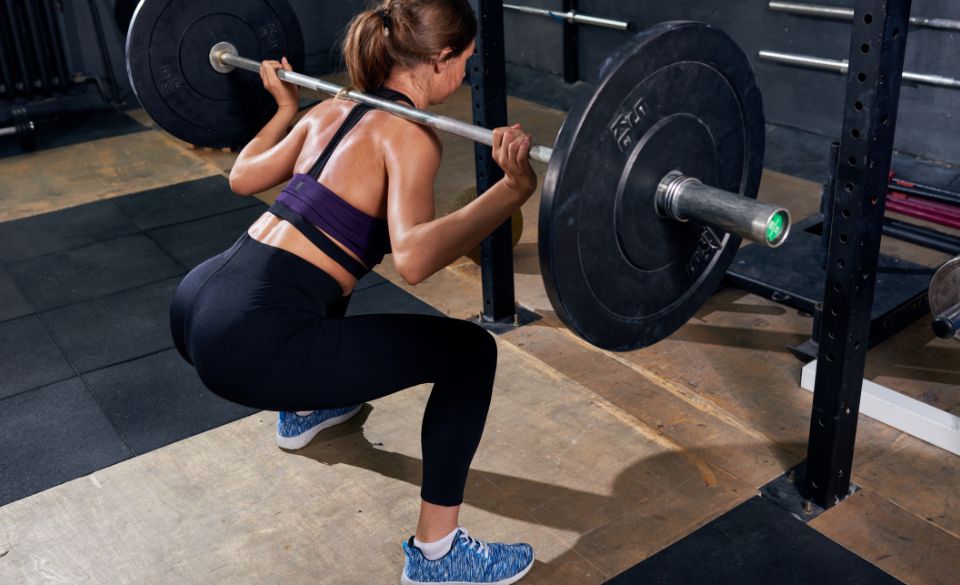
Why You Should Add 90 Degree Squats to Your Workout Routine
Page Contents
Are you looking for a new exercise to add to your workout routine? Look no further than the 90 degree squat! This simple yet effective exercise is a great way to target your glutes, quads, and hamstrings. In this article, we’ll take a closer look at what the 90 degree squat is and why you should consider adding it to your workout routine.
What Is A 90 Degree Squat?
A 90 degree squat, also known as a parallel squat or a box squat, is a variation of the classic squat exercise. To perform a 90 degree squat, you start by standing with your feet shoulder-width apart and your toes pointing forward. Lower your body down as if you are going to sit in a chair until your thighs are parallel to the floor, then push back up to standing.
Benefits Of A 90 Degree Squat
The 90 degree squat is a great exercise that can provide a wide range of benefits for your body. One of the main benefits of this exercise is that it can help to build strength and endurance in your legs. When you perform a 90 degree squat, you are targeting some of the largest and most powerful muscles in your body, including your glutes, quads, and hamstrings. This can help to improve your overall strength and stability, making it easier to perform other exercises and daily activities.
In addition to building strength and endurance, 90 degree squats can also improve your overall mobility and flexibility. By performing this exercise regularly, you can improve your range of motion in your hips, knees, and ankles. This can be especially beneficial for athletes who need to move quickly and efficiently on the field or court.
Research has also shown that the 90 degree squat can be an effective way to reduce your risk of injury. When you perform this exercise, you are engaging multiple muscle groups at once, which can help to improve your overall balance and stability. This can be particularly important for older adults, who may be at higher risk of falls and other injuries.
Finally, the 90 degree squat can also be a great way to improve your overall body composition. By targeting your glutes, quads, and hamstrings, this exercise can help to build lean muscle mass while also burning calories and fat. This can help to improve your overall appearance and confidence, while also reducing your risk of a wide range of health conditions.
Overall, there are many benefits to adding 90 degree squats to your workout routine. Whether you’re looking to build strength and endurance, improve your mobility and flexibility, reduce your risk of injury, or improve your body composition, this exercise is a great option that can help you achieve your goals.
Normal Squat Vs 90 Degree Squat – The Differences
When it comes to squats, there are a lot of different variations that you can perform. Two of the most popular options are the normal squat and the 90 degree squat. While both exercises can be beneficial, there are some key differences between them that are worth noting.
The main difference between a normal squat and a 90 degree squat is the depth of the squat itself. With a normal squat, you typically go as low as you can comfortably go, with your thighs parallel to the ground or slightly below. On the other hand, with a 90 degree squat, you stop when your thighs are at a 90 degree angle to the ground, which is typically a bit higher than a normal squat.
One of the benefits of the 90 degree squat is that it can be a bit easier on your knees than a normal squat. When you stop at the 90 degree angle, you put less stress on your knees, which can be particularly beneficial for people who have knee pain or are recovering from an injury.
Another key difference between the two exercises is the muscles that they target. While both exercises work your glutes, quads, and hamstrings, the 90 degree squat tends to put more emphasis on your quads. This can be a great option for people who want to build up their quad strength or improve their quad definition.
On the other hand, the normal squat tends to be more of a total-body exercise, as it requires more balance and coordination. This can be a great option for people who want to work on their overall stability and athleticism.
Ultimately, whether you choose to do a normal squat or a 90 degree squat will depend on your personal goals and preferences. Both exercises can be effective for building strength and improving your overall fitness, so it’s worth experimenting with both to see which one feels best for you.
How Deep Should You Squat? 90 Degrees Or Lower
When it comes to squat depth, there has been a lot of debate about whether it’s better to go all the way down to a “butt-to-grass” depth or to stop at 90 degrees. So what does the research say?
A study published in the Journal of Strength and Conditioning Research found that going all the way down to a deep squat can be beneficial for improving lower body strength and power. The researchers found that athletes who performed deep squats had greater improvements in vertical jump height compared to those who performed partial squats.
However, another study published in the same journal found that squat depth did not have a significant impact on muscle activation in the quads or glutes. The researchers found that both full-depth and partial-depth squats were effective for activating these muscle groups.
So, what’s the bottom line? While there are benefits to performing deep squats, it’s not necessary to go all the way down to a “butt-to-grass” depth if it causes discomfort or pain. Additionally, some people may not have the mobility or flexibility to perform deep squats safely.
A good rule of thumb is to aim for a squat depth where your thighs are at least parallel to the ground. This typically falls somewhere around the 90 degree mark, but can vary depending on your individual anatomy and mobility. It’s also important to make sure you maintain good form throughout the entire range of motion, regardless of how deep you choose to squat.
Overall, the depth of your squat should be based on your individual goals, abilities, and comfort level. As with any exercise, it’s important to listen to your body and make adjustments as needed to ensure you’re performing the movement safely and effectively.
Conclusion
If you’re looking for a new exercise to add to your workout routine, consider giving the 90 degree squat a try. This exercise is a great way to build strength and endurance in your legs while also improving your mobility and flexibility. Just be sure to start with a manageable weight and gradually increase as you get stronger. And as always, consult with a healthcare professional before starting any new exercise program.


